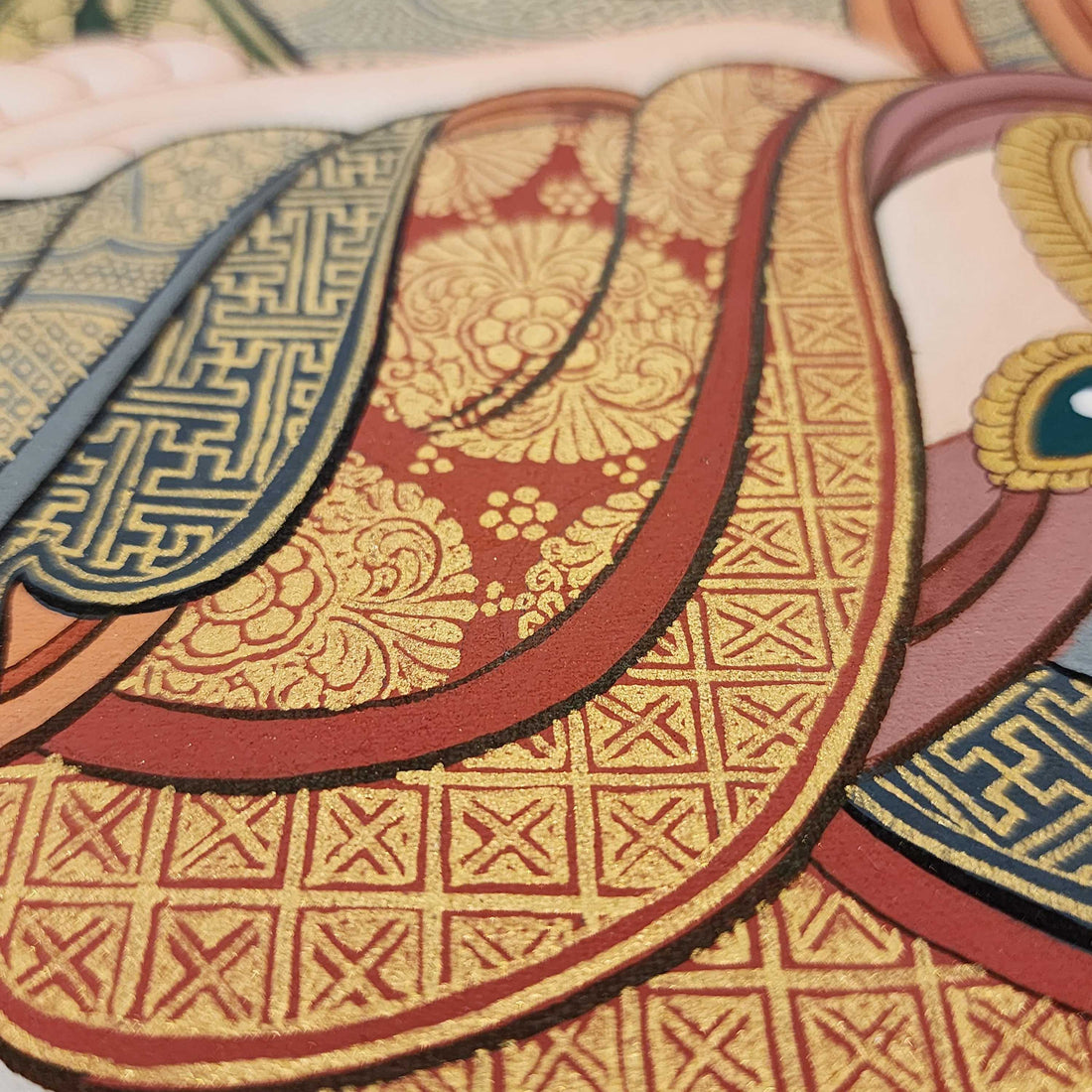
How to Care for and Preserve Your Tibetan Thangka Painting
Share
Introduction
An authentic Tibetan Thangka is a sacred and valuable work of art. Whether you own it for spiritual practice, cultural appreciation, or as a collector’s piece, proper care is essential to preserve its beauty and meaning for generations. Because Thangkas are made from delicate materials like cotton, silk, and mineral pigments, they require mindful handling and storage.
Why Preservation Matters
Thangkas are not just artworks. They are spiritual tools. Fading colors, torn fabric, or exposure to moisture can diminish their aesthetic and sacred qualities. Proper care ensures your Thangka remains vibrant, protected, and spiritually potent.
How to Care for Your Thangka
Avoid Direct Sunlight
UV rays can fade mineral pigments and weaken fabric fibers. Display your Thangka in a shaded area or use UV-protective glass if framed.
Maintain Stable Humidity
Excess moisture can cause mold or fabric warping. Keep your Thangka in a cool, dry environment, ideally with humidity around 40–50%.
Handle with Clean Hands
Oils and dirt from skin can damage the paint and silk. Always wash hands or wear cotton gloves before touching the artwork.
Roll for Storage
If not displayed, roll the Thangka with a protective layer of clean cotton cloth. Never fold it, as creases can crack the paint.
Protect Silk Borders
The silk brocade is as important as the painting itself. Avoid snagging or staining it when moving or displaying your Thangka.
Occasional Professional Cleaning
Dust gently with a soft brush. For deep cleaning or repairs, consult a professional conservator familiar with Himalayan art.
Framing vs. Traditional Hanging
Some owners choose to frame their Thangkas for extra protection, while others prefer traditional hanging with silk brocade. Both are acceptable, but framing provides better environmental control, especially in humid climates.
Spiritual Considerations
If your Thangka has been blessed or consecrated, handle it with extra reverence. When storing, place it in a clean, elevated location rather than directly on the floor.
Conclusion
Caring for your Thangka painting preserves not only its physical beauty but also its spiritual energy. By following traditional preservation techniques, you ensure your sacred artwork remains a source of inspiration, meditation, and cultural heritage for many years.
